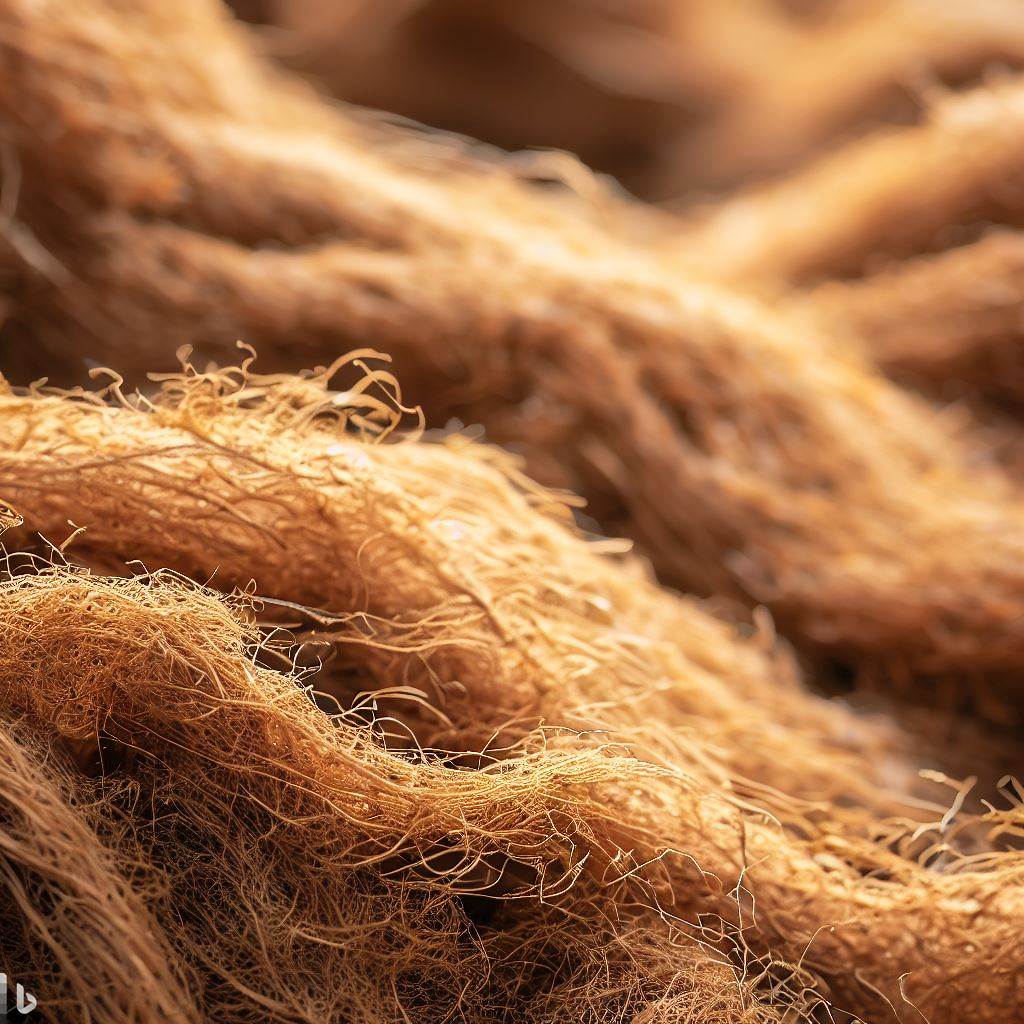
Clean water is essential for our health and well-being, and finding sustainable solutions for water filtration is becoming increasingly important. One such solution is the use of coir fiber for filtration. Coir fiber, derived from coconut husks, is a natural and renewable resource that offers numerous benefits for water treatment. In this article, we will explore what coir fiber is, how it is produced, and the advantages of using it for filtration.
What is coir fiber and how is it produced?
Coir fiber is a natural fiber extracted from the husk of coconuts. It is widely used in various industries, including agriculture, horticulture, and, of course, filtration. The production of coir fiber begins with the extraction of coconut husks. These husks are soaked in water for several months to soften the fibers. After the soaking process, the fibers are separated from the husks and then dried and processed to create coir fiber.
The advantages of using coir fiber for filtration
Coir fiber offers several advantages when used for filtration. First and foremost, it is a natural and sustainable material. Unlike synthetic filtration materials, coir fiber is biodegradable and does not release harmful chemicals into the environment. Additionally, coir fiber has excellent filtration properties. Its long and fibrous structure allows for the effective trapping of contaminants, including sediment, organic matter, and even certain pathogens. This makes coir fiber an ideal material for water treatment systems.
Another advantage of coir fiber is its affordability. Compared to other filtration materials, such as activated carbon or sand, coir fiber is relatively inexpensive. This makes it a cost-effective choice for both large-scale water treatment plants and smaller, decentralized filtration systems. Furthermore, coir fiber is lightweight and easy to handle, making it convenient for installation and maintenance.
Coir fiber for filtration has many advantages, such as:
- It is biodegradable and eco-friendly, which means it does not harm the environment or create waste.
- It is durable and resilient, which means it can withstand harsh conditions and last for a long time.
- It is cost-effective and easy to install, which means it does not require much maintenance or special equipment.
- It is versatile and adaptable, which means it can be used for different types of filtration systems and applications.
Some examples of coir fiber for filtration are:
- Coir wattles: These are cylindrical rolls of coir fiber that are placed along slopes, drains, or streams to prevent erosion and filter out sediments. Coir wattles are less densely packed than coir logs, which allows water to flow through them while retaining solids. Coir wattles can also reduce water velocity and promote vegetation growth.
- Coir logs: These are similar to coir wattles, but they are more densely packed and have a higher diameter. Coir logs are used to stabilize shorelines, riverbanks, or wetlands and provide habitat for wildlife. Coir logs can also prevent wave action and retain moisture.
- Coir mats: These are flat sheets of coir fiber that are laid over soil or sand to prevent erosion and enhance vegetation. Coir mats can also act as a filter layer for stormwater runoff or wastewater treatment. Coir mats can be woven or non-woven, depending on the desired strength and porosity.
Coir fiber’s effectiveness in removing contaminants
One of the key benefits of using coir fiber for filtration is its effectiveness in removing contaminants from water. Coir fiber has a high surface area, which allows for efficient adsorption of impurities. Its fibrous structure creates a network of tiny pores that can trap particles as small as 10 microns. This means that coir fiber can effectively remove sediments, suspended solids, and even certain heavy metals from water.
Coir fiber also has natural antimicrobial properties, which further enhance its effectiveness as a filtration material. Studies have shown that coir fiber can inhibit the growth of bacteria and other microorganisms, making it particularly suitable for applications where waterborne pathogens are a concern. This makes coir fiber an excellent choice for both drinking water purification and wastewater treatment.
Coir fiber vs. other filtration materials
When comparing coir fiber to other filtration materials, such as activated carbon or sand, several factors come into play. One of the main advantages of coir fiber is its sustainability. Unlike activated carbon, which is derived from fossil fuels, or sand, which requires extensive mining, coir fiber is a renewable resource that can be harvested without causing harm to the environment. This makes coir fiber a more sustainable choice for water filtration.
Another advantage of coir fiber is its versatility. While activated carbon and sand are primarily used for specific applications, such as removing organic compounds or fine particles, coir fiber can effectively remove a wide range of contaminants. Its ability to trap sediments, organic matter, heavy metals, and even pathogens makes it a highly versatile filtration material.
Additionally, coir fiber is more cost-effective compared to activated carbon, especially for large-scale water treatment systems. The production of activated carbon is an energy-intensive process, which contributes to its higher cost. Coir fiber, on the other hand, requires minimal processing and is readily available at a lower cost. This makes coir fiber a more economical choice for water filtration projects.
Case studies: Successful implementation of coir fiber filtration systems
Several case studies have demonstrated the successful implementation of coir fiber filtration systems in various settings. For example, in a rural community in India, a decentralized water treatment system using coir fiber was installed to provide clean drinking water to the local population. The system effectively removed contaminants from the water source, improving the quality and safety of the drinking water.
In another case study, a wastewater treatment plant in Australia incorporated coir fiber filtration as a pre-treatment step. The coir fiber effectively removed suspended solids and organic matter, reducing the load on the subsequent treatment processes. This resulted in improved treatment efficiency and reduced operating costs for the plant.
These case studies highlight the effectiveness and practicality of using coir fiber for filtration. They demonstrate that coir fiber can be successfully integrated into both small-scale and large-scale water treatment systems, providing a sustainable and efficient solution for clean water.
Considerations when using coir fiber for filtration
While coir fiber offers numerous benefits for filtration, there are some considerations to keep in mind when using it in water treatment systems. One important factor is the lifespan of the coir fiber. Over time, the fibers can degrade and become less effective in trapping contaminants. Therefore, regular monitoring and replacement of the coir fiber media may be necessary to maintain optimal filtration performance.
Another consideration is the flow rate. Coir fiber has a lower flow rate compared to some other filtration materials, such as sand. This means that larger filtration areas or longer contact times may be required to achieve the desired water treatment goals. It is important to carefully design the filtration system and consider the specific requirements of the water source when using coir fiber.
Lastly, the compatibility of coir fiber with other treatment processes should be evaluated. Coir fiber can be used as a standalone filtration media or in combination with other materials, such as activated carbon or sand. However, it is important to ensure that the different components of the treatment system work together effectively and do not interfere with each other’s performance.
Sustainability benefits of coir fiber filtration
In addition to its filtration capabilities, coir fiber offers significant sustainability benefits. As mentioned earlier, coir fiber is a renewable resource that can be harvested without causing harm to the environment. The production of coir fiber also has a low carbon footprint compared to synthetic filtration materials. This makes coir fiber a more environmentally friendly choice for water treatment.
Furthermore, the use of coir fiber for filtration can contribute to waste management and recycling efforts. Coconut husks, which are the raw material for coir fiber, are often considered waste and are typically discarded. By utilizing these husks for the production of coir fiber, we can reduce waste and create value from what would otherwise be a byproduct.
Coir fiber filtration systems also have the potential to be integrated into natural water treatment processes. For example, in constructed wetlands or eco-parks, coir fiber can be used as a natural filtration medium to enhance the purification of water. This not only improves water quality but also creates habitats for various plant and animal species, contributing to biodiversity conservation.
How to incorporate coir fiber filtration into your water treatment system
If you are considering incorporating coir fiber filtration into your water treatment system, there are a few key steps to follow. First, assess the specific water quality challenges you are facing and determine if coir fiber can effectively address those challenges. Consider factors such as the types of contaminants present, the desired treatment goals, and the flow rate requirements.
Next, design the filtration system to ensure optimal performance. This includes selecting the appropriate filtration media size, determining the contact time, and considering the overall system layout. Seek guidance from water treatment experts or consultants to ensure that the design meets your specific needs and local regulations.
Once the filtration system is installed, regular monitoring and maintenance are crucial to ensure its continued effectiveness. Monitor the quality of the treated water and periodically test the coir fiber media for signs of degradation. If necessary, replace the coir fiber media to maintain optimal filtration performance.
Conclusion: The future of coir fiber in water filtration
Coir fiber offers a sustainable and effective solution for water filtration. Its natural and renewable properties make it an environmentally friendly choice, while its filtration capabilities make it an efficient option for removing contaminants from water. With proper design, implementation, and maintenance, coir fiber filtration systems can provide clean and safe water for various applications, from drinking water treatment to wastewater purification.
As we continue to seek sustainable solutions for clean water, coir fiber has the potential to play a significant role in the future of water filtration. Its versatility, affordability, and sustainability make it a compelling choice for both large-scale water treatment plants and decentralized filtration systems. By harnessing the power of coir fiber, we can contribute to a cleaner and healthier future for all.







